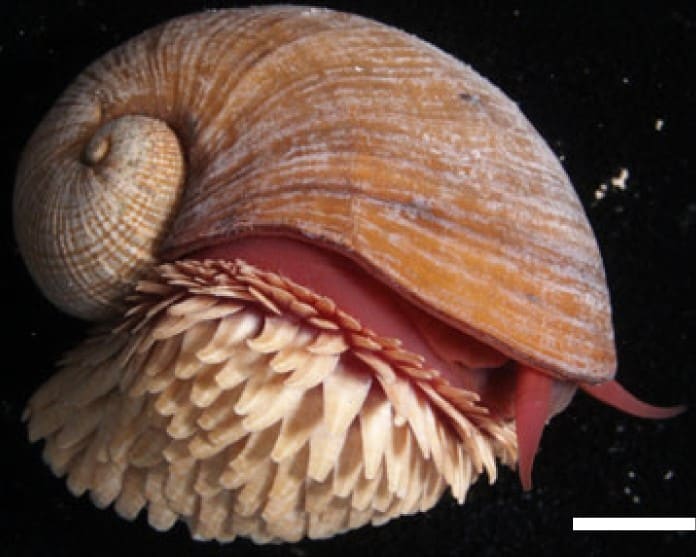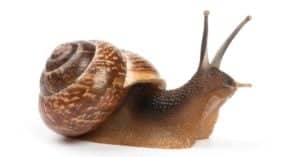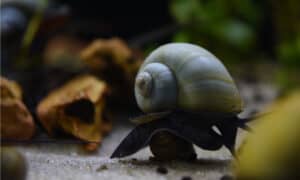The ocean’s depths have always fascinated humanity. Stories of giant creatures that come up and attack ships have circulated for as long as we have sailed the seven seas. Yet, it’s only been the last few decades that we have had the technological know-how to begin exploring the unknown regions of our beautiful blue planet.
Hydrothermal Vents Host Dozens of Species
In 1977, Robert Ballard was a marine geologist at Woods Hole Oceanographic Institution aboard the research vessel Knorr. The ship was 400 miles off the coast of South America, connected to an underwater platform called ANGUS, photographing the ocean floor.
It was this expedition that discovered the first hydrothermal vents on the floor of the ocean, near the Galapagos Rift in the Pacific Ocean. Still, they questioned whether life can exist under such extremes of pressure and temperature.
It turns out that life is resilient and finds a way to thrive, even under the most inhospitable circumstances.
Since that fantastic discovery, scientific research has been conducted worldwide, searching for more hydrothermal vents and investigating the animals that live around them.
These vents are hosts to dozens of animals that can’t be found anywhere else in the world. They include giant red-tipped tube worms, bizarre shrimp whose eyes are on their backs, fish that resemble ghostly copies of those near the surface, and several snail species, like the sea pangolin (Chrysomallon squamiferum), named after the armadillo-like pangolin.
The Snail That Covers Itself in Armor
When you think of snails, an armor-plated deep-sea animal is probably not what you expected. Yet, this species of scaly-footed gastropods is real, but you’ll never see one alive. These snails go by a few names like the volcano snail, scaly-footed snail, scaly-footed gastropod, and sea pangolin. They live around hydrothermal vents (also called volcanic vents) over a mile below the ocean’s surface. In places with immense pressure, temperatures can reach 750 degrees Fahrenheit.
Even though the deep-sea vents are known for their unique wildlife, nobody expected to see something so special as an iron-plated sea snail. Also known as the sea pangolin, the scaly-footed snail lives at the bottom of the Indian Ocean in four locations around volcanic vents.

The scaly-footed snail, also known as the sea pangolin, lives around volcanic vents at the bottom of the Indian Ocean.
© – License
What’s in a Sea Pangolin’s Armor?
The sea pangolin is remarkable, and while sulfur kills its land-dwelling distant cousins, this snail uses it. Hydrothermal vents are heavy with sulfur. Yet, this snail uses it and excretes the sulfur as the iron-sulfides pyrite and greigite. This crazy snail uses them in the outer layer of its shell and the scales (sclerites) that cover its foot. Making it even more unusual, this is the only animal known to use sulfides this way.
A few snail species around volcanic vents cover their feet in sclerites. The sclerites’ purpose is a bit of a mystery. However, some scientists believe they may be protective against another species that preys on the snails. Sclerite purpose aside, none of them have taken it as far as the sea pangolin.
The sea pangolin’s shell is three layers deep. The outer layer is pyrite and greigite; the middle is conchiolin, similar to that found in other gastropods; the final inner layer is aragonite, a crystalline form of calcium carbonate.
The sclerites are also composed of conchiolin. It’s a protein-based substance that forms the basis of mollusk shells. However, the sea pangolin takes it a few steps further. It excretes pyrite and greigite as a shell over the top of the conchiolin. Because greigite is related to magnetite, the snails are also ferrimagnetic.
Yes, you can pick up sea pangolins with a magnet.
So how does it happen? That’s the big question, isn’t it? According to a paper published in 2003, just two years after their discovery, the gastropods themselves may be in control of the iron fortifications.
There’s Even More Weirdness
Scientists don’t yet know how the sea pangolin creates its armor. However, its iron-clad armor isn’t the only weird thing about the animal.
- The snail doesn’t have eyes, yet at those depths, who needs them? There isn’t any light.
- It doesn’t seem to eat and gets its nutrition from energy produced by symbiotic gammaproteobacteria it houses in its esophageal gland.
- It also has a huge heart – about 4% of its body volume. In contrast, a human heart is only about 0.3% of total weight.
- It’s pretty big for a snail in the Peltospiridae family, and its shell can measure almost 2 inches.
Deep-Sea Mining May Threaten This and Other Rare Species
It’s an exceedingly rare and peculiar animal. Its total distribution is probably less than about .01 miles of ocean floor centered around the vents of the Indian Ocean. Thanks to its rarity, it’s classified as endangered by the IUCN.
Active mining permits affect two of the vents where sea pangolins live within the region. Mining companies have their eye on the minerals that the hydrothermal vents can concentrate. Elements like gold, zinc, cobalt, and lithium will likely be found in and around the vents. Mining companies are also interested in a vast area of the ocean floor littered with metallic rocks of copper, manganese, and nickel.
Mining isn’t technologically feasible yet. However, that day may not be far in the future. By protecting the animals around the vents now, the hope is that when it is viable, the companies will find a way to protect what’s already there, even as they extract the minerals they need.
The photo featured at the top of this post is © – License
Sources
- The Discovery of Hydrothermal Vents by Evan Lubofsky, Available here: https://www.whoi.edu/oceanus/feature/the-discovery-of-hydrothermal-vents/
- MolluscaBase eds. (2022). MolluscaBase. Chrysomallon squamiferum C. Chen, Linse, Copley & Rogers, 2015. Accessed through: World Register of Marine Species, Available here: https://www.marinespecies.org/aphia.php?p=taxdetails&id=736932
- Hydrothermal Vent Creatures | Smithsonian Ocean, Available here: https://ocean.si.edu/ocean-life/invertebrates/hydrothermal-vent-creatures
FAQs (Frequently Asked Questions)
Why are they called sea pangolins?
Like the land-dwelling pangolin, this deep-sea snail uses armor plating for protection.
Where do sea pangolins live?
This species is endemic to hydrothermal vents on the bottom of the Indian Ocean.
What do they eat?
We’re not sure they eat at all. They host symbiotic gammaproteobacteria in their esophageal gland.
How do sea pangolins create their armor?
In a process that scientists don’t fully understand, they process and excrete the sulfur and minerals around the hydrothermal vents into a coating on their shells and sclerites.
Thank you for reading! Have some feedback for us? Contact the AZ Animals editorial team.






